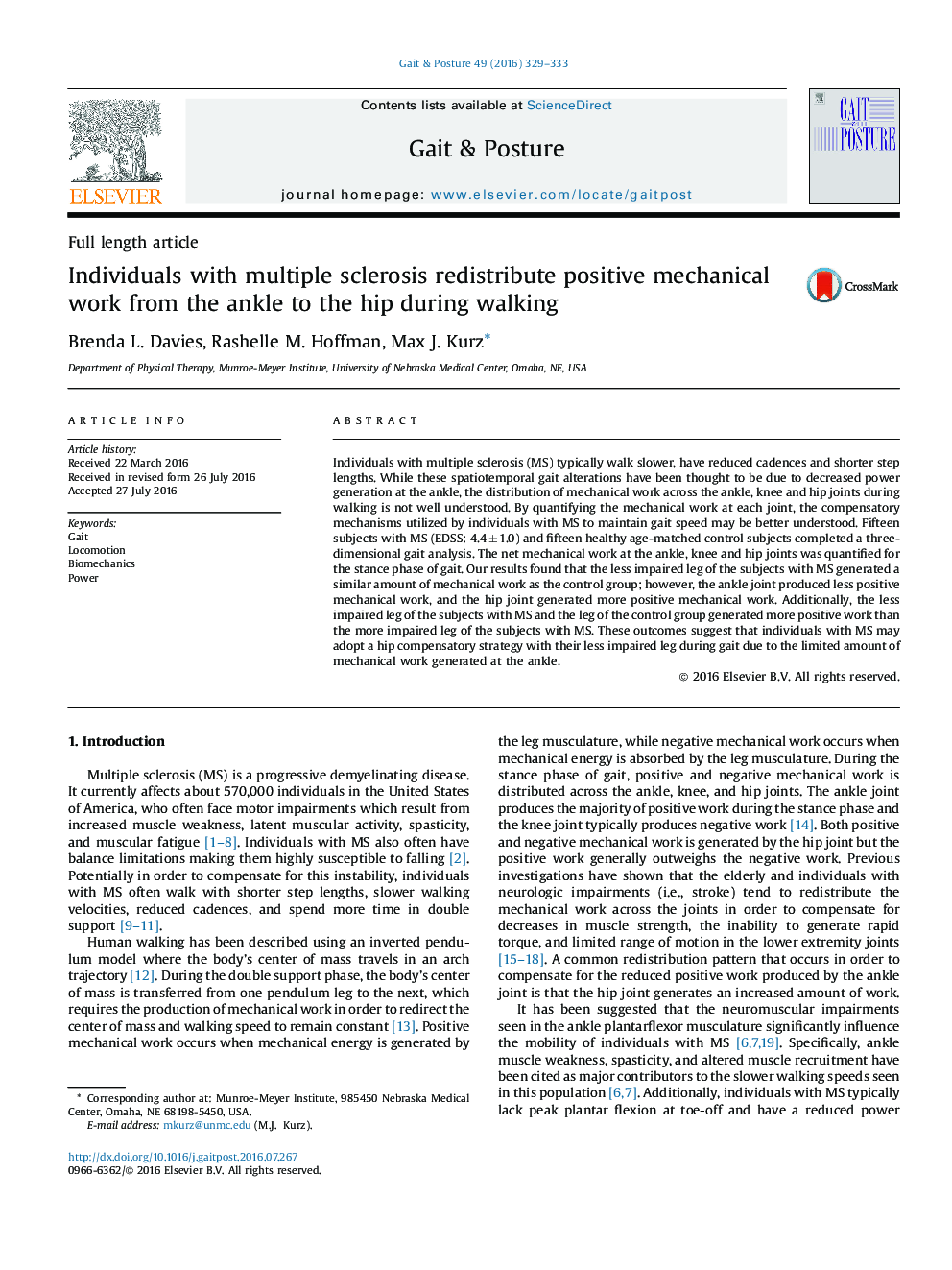| کد مقاله | کد نشریه | سال انتشار | مقاله انگلیسی | نسخه تمام متن |
|---|---|---|---|---|
| 6205486 | 1603846 | 2016 | 5 صفحه PDF | دانلود رایگان |
• The more impaired leg of the subjects with MS generated negative net mechanical work.
• The less impaired leg of the subjects with MS generated positive net mechanical work.
• The less impaired leg produced a similar amount of positive work as healthy adults.
• The hip joint of the less impaired leg generated more positive work than the controls.
• Individuals with MS may adopt a hip compensatory strategy to maintain walking speed.
Individuals with multiple sclerosis (MS) typically walk slower, have reduced cadences and shorter step lengths. While these spatiotemporal gait alterations have been thought to be due to decreased power generation at the ankle, the distribution of mechanical work across the ankle, knee and hip joints during walking is not well understood. By quantifying the mechanical work at each joint, the compensatory mechanisms utilized by individuals with MS to maintain gait speed may be better understood. Fifteen subjects with MS (EDSS: 4.4 ± 1.0) and fifteen healthy age-matched control subjects completed a three-dimensional gait analysis. The net mechanical work at the ankle, knee and hip joints was quantified for the stance phase of gait. Our results found that the less impaired leg of the subjects with MS generated a similar amount of mechanical work as the control group; however, the ankle joint produced less positive mechanical work, and the hip joint generated more positive mechanical work. Additionally, the less impaired leg of the subjects with MS and the leg of the control group generated more positive work than the more impaired leg of the subjects with MS. These outcomes suggest that individuals with MS may adopt a hip compensatory strategy with their less impaired leg during gait due to the limited amount of mechanical work generated at the ankle.
Journal: Gait & Posture - Volume 49, September 2016, Pages 329–333
